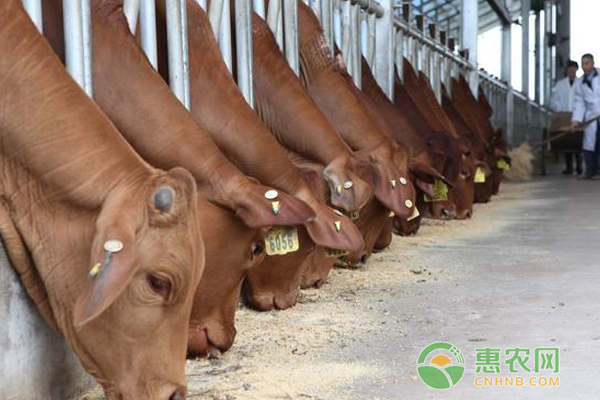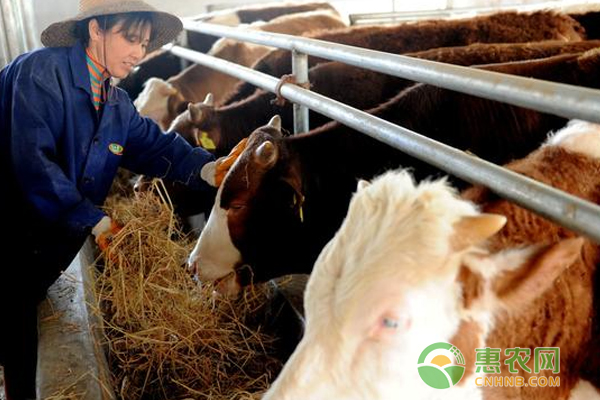Clinical symptoms and control measures of beef cattle worm disease
Coccidiosis is a kind of beef cattle breeding, but it should be prevented early, otherwise it will cause more serious effects. The following are the clinical symptoms, laboratory tests and control measures of beef cattle worm disease compiled by Huinong. Have a quick look!

1 clinical symptoms
The disease has an incubation period of 8 to 15 days and is generally divided into two types, light and heavy. Light, sick cows usually do not show obvious symptoms, mainly due to elevated body temperature of 39.8 ~ 41 ° C, showing heat, but after 3 to 5 days can return to normal. Conjunctival hyperemia, slight swelling of the surface lymph nodes, apathetic, loss of appetite, often accompanied by constipation, but usually a good outcome. Heavy-duty, sick cows show a significant increase in body temperature, generally reaching 40.6~41.8 °C, most of which are retained by heat. In the early stage, the spirit is weak, the appetite is diminished. After 2 to 5 days, the symptoms are aggravated, the ruminant is slow or completely stopped, the appetite is abolished, the milk production is drastically reduced, the shoulder lymph nodes are often enlarged in size, the initial touch is hard, and the compression is painful. Then it gradually softens. Anemia is increasing, alternating constipation and diarrhea, yellow urine, but no hematuria. Visible mucosa at the beginning of the mucus, then became pale. When the symptoms are severe, the body quickly loses weight, shrinks the waist, often can not afford to sleep, and eventually died due to severe exhaustion. In addition, miscarriage usually occurs after a pregnant cow has become ill.
2 necropsy changes
The necropsy of the dead cows was found, the body was thin, the blood was thin as water, the coagulation was poor, and there were yellow fat and connective tissue such as colloidal edema in the skin and muscles. The pleural effusion and ascites are pale yellow, the small intestine serosa is yellow-stained, and contains a lot of blood, sometimes there will be local congestion plaques; there are different sizes of ulcer spots in the stomach and abdomen. The visceral membrane is yellow-stained. Pericardial effusion, red and yellow myocardium, soft texture; bleeding spots on the outer membrane of the heart, and disseminated bleeding spots; bleeding spots in the coronary coronal sulcus. The liver is yellowish brown, the gallbladder expands and contains a lot of thick bile. The spleen is obviously swollen and round, generally reaching 3 to 4 times the normal size, and the spleen is red. The lungs are congested and edematous. The bronchi contains a lot of reddish foam.
   3 Laboratory testing
Direct microscopic examination. Under aseptic conditions, the venous blood of the ear veins of the cattle is taken into a smear. After microscopic examination by Giemsa staining, red blood cells of uneven size can be seen, and there are rod-shaped, comma-shaped, ring-shaped worms in the red blood cells. Generally, a red blood cell contains 1 to 4 worms, and the insect infection rate is over 70%. This is the most accurate and important method for diagnosing the disease. It should be noted that the pathogen should be identified at the time of diagnosis. It is necessary to pay attention to the location, size, arrangement of the worms, the number and location of the stained lumps in the worms, and the number ratio of different morphological worms. The special structure unique to the worm body, which is a typical worm body, is a characteristic basis for diagnosing certain cokeworms. For example, the Boswellia elegans is characterized by a bamboo bud-like shape, a rod shape, and a length smaller than the red blood cell radius.

Serological diagnosis. Mainly by indirect fluorescent antibody test, indirect hemagglutination test, complement binding reaction, etc. to diagnose the disease, which can be used routinely is an indirect fluorescent antibody test, mainly for quarantine of insects with low insect infection rate, and Epidemiological investigations were carried out in infected areas. Complement binding reaction is mainly used for the diagnosis of ring-shaped Taylor's coccidiosis. The indirect fluorescent antibody test is mainly used for the diagnosis of T. cerevisiae, with good specificity and high sensitivity. It is suitable for port quarantine, epidemiological investigation and clinical Applied in diagnosis.
4 Prevention measures
medical treatement. First use a 1% malathion solution to kill aphids and prevent the spread of the epidemic. Then carry out anti-blood protozoa, you can choose to use the market-supplied blood worm net (the main component is triazepine), use 5~7mg/kg according to body weight, add appropriate amount of normal saline to make 10% solution, and then deep muscle injection, interval Once every 24 hours, 2 to 3 times in a row, it has a good therapeutic effect. For pregnant cows infected with the disease, it is also necessary to use progesterone. Each injection of 100mg can effectively prevent the occurrence of miscarriage. In addition, it can also be used for cardiac rehydration. It can be intravenously injected with 2000mL 25% glucose solution, 200mL vitamin C injection, 20~30mL 10% An Na coffee injection, once a day for 3~5 days. , has a better therapeutic effect.
Blood transfusion therapy. If the condition of the sick cow is severe, and the condition allows, blood transfusion can be performed. Before the blood transfusion, a biological test should be taken, that is, 100 mL of donor bovine blood is taken. After 10 to 15 minutes, the blood is intravenously injected into the diseased cow to observe the reaction. It should be noted that due to the relatively slow response of the cow, two intravenous injections are required. If there is no abnormal reaction after transfusion of the diseased cow, 1500~2000mL donor bovine blood can be taken. Note that it is divided into multiple collections. Each time, about 450mL of blood is collected and placed in a blood storage bottle with 10% calcium chloride anticoagulant. Store in the middle, and gently shake the bottle during the collection process to prevent blood clotting. After the blood collection is completed, the sick cow can be transfused.

Timely killing. Strengthening mites can generally be divided into 2 times. The first time is carried out from December to January of the next year. At this time, the nymphs on the cattle are in the wintering period; the second time is in the 5th to 7th. For bovine body mites, you can choose to use a 1:400 dilution of trichlorfon solution or sputum clean water for the spray bath, which is carried out twice in a row, 15 days apart, but pay attention to the refilling after the summer rain, until the time is over. Infection season. The cockroaches are generally selected from April to May and August to September. The main reason is to block the wall joints with cement or mud to block the larvae of the female larvae and spray the drugs to eliminate the larvae. In addition, it is also possible to use 3 mg/kg of Bernier by weight, and prepare a solution of 7% for deep intramuscular injection, once every 20 days, which can effectively prevent the disease.
The above are the clinical symptoms and prevention measures of beef cattle worm disease. The parents of raising cattle have a quick look, I hope to help you!
Medical Cold Patch
Patch for diarrhea
[Name] Medical Cold Patch
[Package Dimension] 5cm 4pieces/box
The pain relief patch is composed of three layers, namely, backing lining, middle gel and protective film. It is free from pharmacological, immunological or metabolic ingredients.
[Scope of Application] For cold physiotherapy, closed soft tissue only.
[Indications]
The patches give a fast relief for diarrhea.
[How To Use a Patch]
Please follow the Schematic Diagram. One piece, one time.
The curing effect of each piece can last for 6-8 hours.
[Attention]
Do not apply the patch on the problematic skin, such as wounds, eczema, dermatitis,or in the eyes. People allergic to herbs and the pregnant are advised not to use the medication. If swelling or irritation occurs, please stop using and if any of these effects persist or worsen.notify your doctor or pharmacist promptly. Children using the patch must be supervised by adults.
[Storage Conditions]
Store below 30c in a dry place away from heat and direct sunlight.
Patch For Diarrhea,Medicated Patches For Arthiritis,Plaster For Diarrhea,Pad For Diarrhea
Shandong XiJieYiTong International Trade Co.,Ltd. , https://www.sdxjmedical.com